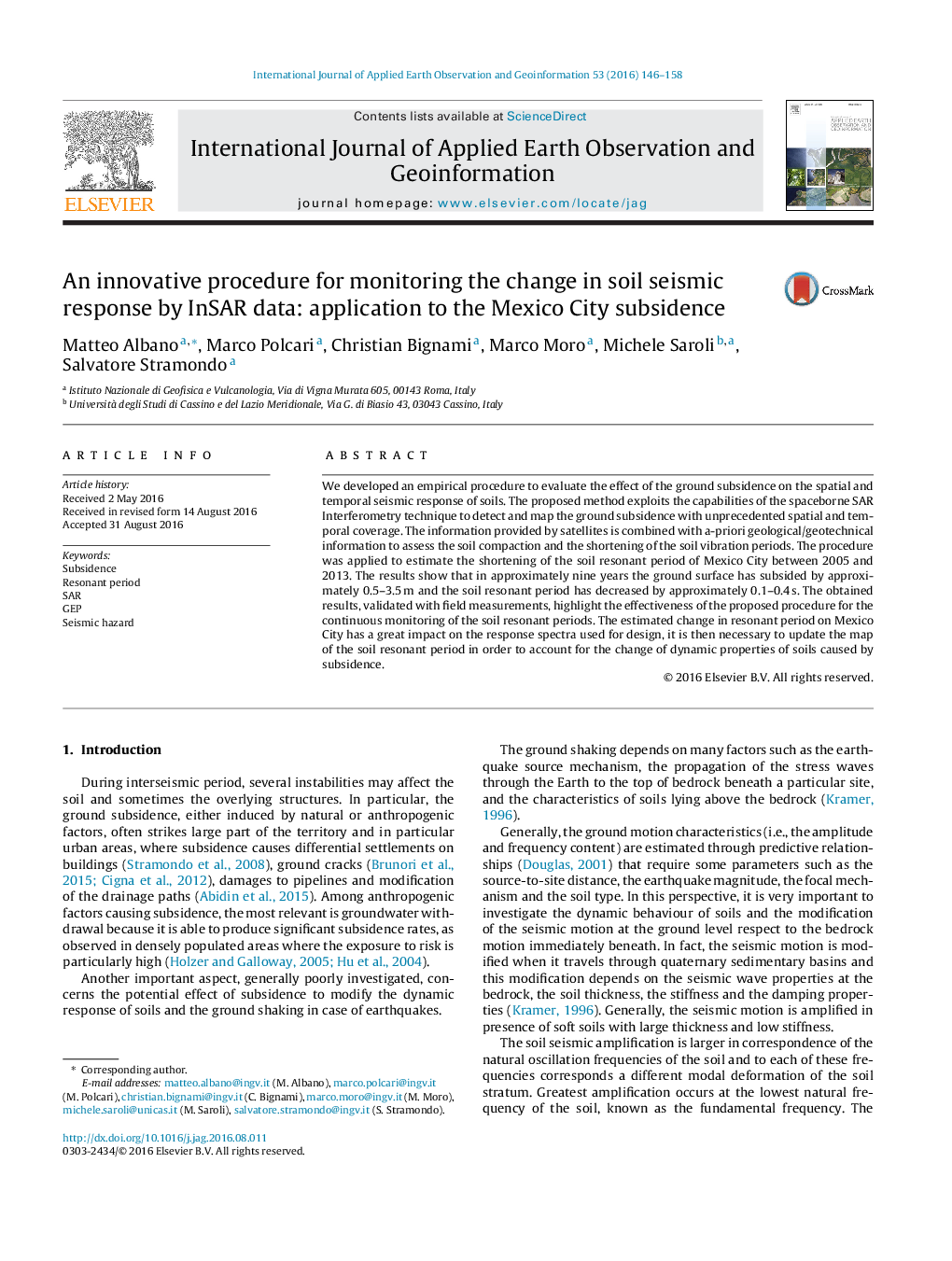| Article ID | Journal | Published Year | Pages | File Type |
|---|---|---|---|---|
| 6348461 | International Journal of Applied Earth Observation and Geoinformation | 2016 | 13 Pages |
Abstract
We developed an empirical procedure to evaluate the effect of the ground subsidence on the spatial and temporal seismic response of soils. The proposed method exploits the capabilities of the spaceborne SAR Interferometry technique to detect and map the ground subsidence with unprecedented spatial and temporal coverage. The information provided by satellites is combined with a-priori geological/geotechnical information to assess the soil compaction and the shortening of the soil vibration periods. The procedure was applied to estimate the shortening of the soil resonant period of Mexico City between 2005 and 2013. The results show that in approximately nine years the ground surface has subsided by approximately 0.5â¿¿3.5Â m and the soil resonant period has decreased by approximately 0.1â¿¿0.4Â s. The obtained results, validated with field measurements, highlight the effectiveness of the proposed procedure for the continuous monitoring of the soil resonant periods. The estimated change in resonant period on Mexico City has a great impact on the response spectra used for design, it is then necessary to update the map of the soil resonant period in order to account for the change of dynamic properties of soils caused by subsidence.
Keywords
Related Topics
Physical Sciences and Engineering
Earth and Planetary Sciences
Computers in Earth Sciences
Authors
Matteo Albano, Marco Polcari, Christian Bignami, Marco Moro, Michele Saroli, Salvatore Stramondo,
